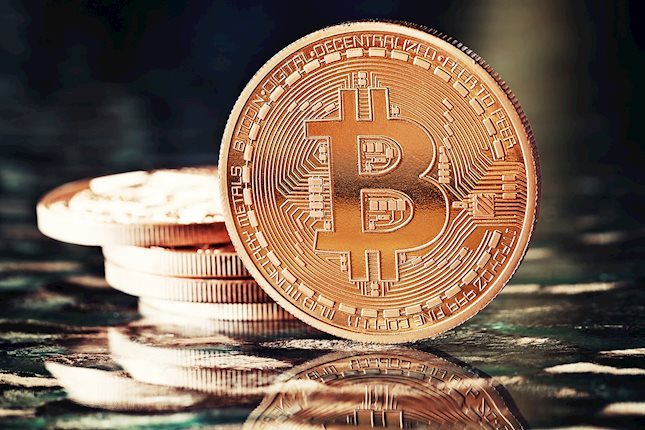- Indian Rupee trades softer on the rising month-end demand of USD.
- India’s GDP for October-December 2023 is expected to slow to 6.5% from 7.6% in the previous quarter.
- The US January Core PCE and Indian GDP growth numbers will be the highlights on Thursday.
Indian Rupee (INR) trades in negative territory on Thursday amid increased month-end demand for the US Dollar (USD). Some traders speculate that the Reserve Bank of India (RBI) might be actively acquiring Dollars in recent sessions, which might limit the pair in a tight range. However, robust economic fundamentals, the pullback in oil prices, and moderation in domestic inflation might provide some support to the INR.
The Statistics Ministry will release India’s GDP data for October-December 2023 on Thursday, which is estimated to slow down to 6.5% from 7.6% in the previous quarter. If the report shows a stronger-than-estimated outcome, this could boost the Indian Rupee and weigh on the USD/INR pair.
The US Core Personal Consumption Expenditures Index (Core PCE) for January, the Fed's preferred inflation measure, will be in the spotlight on Thursday. Additionally, US Personal Income, Personal Spending, Pending Home Sales, and the weekly Initial Jobless Claims are also due later in the day. On the Indian docket, the GDP quarterly for Q3 and GDP annual growth numbers on Thursday could provide fresh catalysts for the USD/INR pair.
Daily Digest Market Movers: Indian Rupee weakens amid uncertainties and global factors
- The RBI estimated Indian GDP to grow at 6.5% for October-December 2023, while the ICRA predicted 6%.
- Indian GDP expanded by 7.6% in the July-September quarter (Q2) of FY 24 and 4.5% in Q3 of FY 23.
- The US Gross Domestic Product (GDP) for the fourth quarter grew at a 3.2% annualized rate from a 3.3% in the previous reading, weaker than the estimation of a 3.3% expansion.
- The New York Federal Reserve (Fed) President John Williams said that even though there's still some distance to cover in achieving the Fed 2% inflation target, the door is opening to interest rate cuts this year, depending on how the data come in.
- Investors have priced in 80 basis points (bps) of rate cuts this year, lower than 175 bps priced in around mid-January.
Most recent article: Stock Market Today: Nifty and Sensex trade directionless ahead of key India/ US data
Technical Analysis: Indian Rupee remains within the longer-term trading band between 82.70 and 83.20
Indian Rupee edges lower on the day. USD/INR remains contained within a multi-month-old descending trend channel of 82.70–83.20 since December 8, 2023.
USD/INR maintains a bearish outlook in the near term as the pair is still below the 100-day Exponential Moving Average on the daily timeframe. Additionally, the downward momentum is supported by the 14-day Relative Strength Index (RSI), which holds in the negative zone below the 50.0 midline.
The lower limit of the descending trend channel at 82.70 will be the first downside target for the pair. A decisive break below this level could expose a low of August 23 at 82.45, followed by a low of June 1 at 82.25.
On the other hand, the confluence of a psychological round mark and the 100-day EMA at 83.00 will be the potential resistance level for USD/INR. The additional upside filter to watch is the upper boundary of the descending trend channel at 83.20. A break above the mentioned level would have an opportunity to fire up their bullish momentum. USD/INR could get enough fuel to hit a high of January 2 at 83.35, and finally at 84.00.
US Dollar price today
The table below shows the percentage change of US Dollar (USD) against listed major currencies today. US Dollar was the strongest against the Euro.
| USD | EUR | GBP | CAD | AUD | JPY | NZD | CHF | |
| USD | 0.02% | -0.05% | -0.03% | -0.35% | -0.49% | -0.12% | -0.06% | |
| EUR | -0.03% | -0.07% | -0.05% | -0.37% | -0.51% | -0.14% | -0.08% | |
| GBP | 0.05% | 0.07% | 0.02% | -0.30% | -0.43% | -0.07% | 0.00% | |
| CAD | 0.03% | 0.07% | -0.02% | -0.32% | -0.46% | -0.08% | -0.02% | |
| AUD | 0.35% | 0.37% | 0.29% | 0.31% | -0.14% | 0.23% | 0.29% | |
| JPY | 0.48% | 0.50% | 0.42% | 0.42% | 0.13% | 0.38% | 0.40% | |
| NZD | 0.11% | 0.14% | 0.07% | 0.09% | -0.23% | -0.36% | 0.08% | |
| CHF | 0.06% | 0.08% | 0.00% | 0.02% | -0.29% | -0.43% | -0.06% |
The heat map shows percentage changes of major currencies against each other. The base currency is picked from the left column, while the quote currency is picked from the top row. For example, if you pick the Euro from the left column and move along the horizontal line to the Japanese Yen, the percentage change displayed in the box will represent EUR (base)/JPY (quote).
Indian economy FAQs
How does the Indian economy impact the Indian Rupee?
The Indian economy has averaged a growth rate of 6.13% between 2006 and 2023, which makes it one of the fastest growing in the world. India’s high growth has attracted a lot of foreign investment. This includes Foreign Direct Investment (FDI) into physical projects and Foreign Indirect Investment (FII) by foreign funds into Indian financial markets. The greater the level of investment, the higher the demand for the Rupee (INR). Fluctuations in Dollar-demand from Indian importers also impact INR.
What is the impact of Oil prices on the Rupee?
India has to import a great deal of its Oil and gasoline so the price of Oil can have a direct impact on the Rupee. Oil is mostly traded in US Dollars (USD) on international markets so if the price of Oil rises, aggregate demand for USD increases and Indian importers have to sell more Rupees to meet that demand, which is depreciative for the Rupee.
How does inflation in India impact the Rupee?
Inflation has a complex effect on the Rupee. Ultimately it indicates an increase in money supply which reduces the Rupee’s overall value. Yet if it rises above the Reserve Bank of India’s (RBI) 4% target, the RBI will raise interest rates to bring it down by reducing credit. Higher interest rates, especially real rates (the difference between interest rates and inflation) strengthen the Rupee. They make India a more profitable place for international investors to park their money. A fall in inflation can be supportive of the Rupee. At the same time lower interest rates can have a depreciatory effect on the Rupee.
How does seasonal US Dollar demand from importers and banks impact the Rupee?
India has run a trade deficit for most of its recent history, indicating its imports outweigh its exports. Since the majority of international trade takes place in US Dollars, there are times – due to seasonal demand or order glut – where the high volume of imports leads to significant US Dollar- demand. During these periods the Rupee can weaken as it is heavily sold to meet the demand for Dollars. When markets experience increased volatility, the demand for US Dollars can also shoot up with a similarly negative effect on the Rupee.
Information on these pages contains forward-looking statements that involve risks and uncertainties. Markets and instruments profiled on this page are for informational purposes only and should not in any way come across as a recommendation to buy or sell in these assets. You should do your own thorough research before making any investment decisions. FXStreet does not in any way guarantee that this information is free from mistakes, errors, or material misstatements. It also does not guarantee that this information is of a timely nature. Investing in Open Markets involves a great deal of risk, including the loss of all or a portion of your investment, as well as emotional distress. All risks, losses and costs associated with investing, including total loss of principal, are your responsibility. The views and opinions expressed in this article are those of the authors and do not necessarily reflect the official policy or position of FXStreet nor its advertisers. The author will not be held responsible for information that is found at the end of links posted on this page.
If not otherwise explicitly mentioned in the body of the article, at the time of writing, the author has no position in any stock mentioned in this article and no business relationship with any company mentioned. The author has not received compensation for writing this article, other than from FXStreet.
FXStreet and the author do not provide personalized recommendations. The author makes no representations as to the accuracy, completeness, or suitability of this information. FXStreet and the author will not be liable for any errors, omissions or any losses, injuries or damages arising from this information and its display or use. Errors and omissions excepted.
The author and FXStreet are not registered investment advisors and nothing in this article is intended to be investment advice.
Recommended content
Editors’ Picks

AUD/USD: Bears still dominate the sentiment
AUD/USD quickly reversed Monday’s auspicious start to the week on Tuesday, shifting its attention to the downside and printing new multi-week lows near 0.6430 ahead of the release of inflation data in Oz.

EUR/USD: Sellers will not leave it alone
EUR/USD resumed its widespread leg lower on Tuesday, rapidly setting aside Monday’s bullish price action and returning to the area below the 1.0500 support prior to key US data releases on Wednesday.

Gold under pressure below $2,630
Gold fluctuates above $2,600 on Tuesday after sliding almost three percent – a whopping $90 plus – on Monday due to rumors Israel and Hezbollah were on the verge of agreeing on a ceasefire. Whilst good news for Lebanon, this was not good news for Gold as it improved the outlook for geopolitical risk.

Bitcoin needs a further correction for sustained growth
After weeks of rapid growth, Bitcoin (BTC-USD) entered the maximum turbulence zone falling below $94,000. BTC is currently trading at $93,764 and continues to trend downward, having exited the ascending channel.

Eurozone PMI sounds the alarm about growth once more
The composite PMI dropped from 50 to 48.1, once more stressing growth concerns for the eurozone. Hard data has actually come in better than expected recently – so ahead of the December meeting, the ECB has to figure out whether this is the PMI crying wolf or whether it should take this signal seriously. We think it’s the latter.

Best Forex Brokers with Low Spreads
VERIFIED Low spreads are crucial for reducing trading costs. Explore top Forex brokers offering competitive spreads and high leverage. Compare options for EUR/USD, GBP/USD, USD/JPY, and Gold.